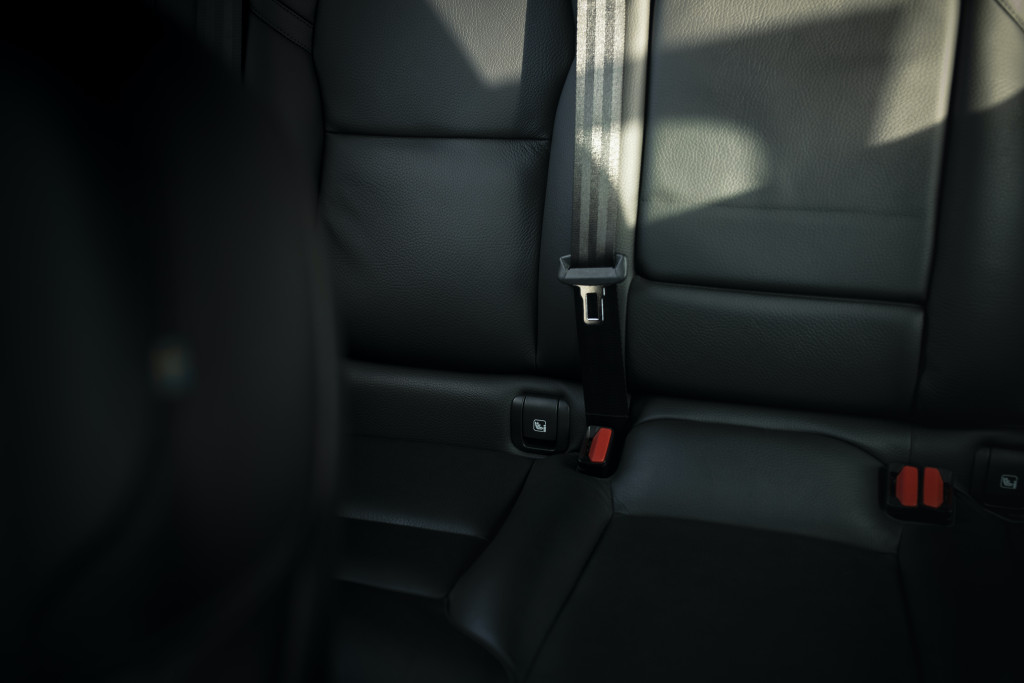In this article, you will explore the various challenges that arise in die grinder operations. Die grinders are powerful tools that are widely used in industries such as manufacturing, automotive, and metalworking. However, mastering the art of die grinder operations can be a daunting task. From understanding the different types of die grinders to learning proper techniques and safety precautions, there are several hurdles to overcome. Join us as we navigate through the challenges faced in die grinder operations and discover helpful tips to enhance your skills in using this versatile tool.

1. Lack of Proper Maintenance
Die grinders, like any other tools, require regular maintenance to ensure optimal performance. Failure to maintain your die grinder can lead to various challenges and drawbacks.
1.1. Impact on Performance
Neglecting proper maintenance can significantly affect the performance of your die grinder. Over time, the tool may experience decreased power output, reduced speed, and overall inefficiency. This can have a substantial impact on your productivity and the quality of your work.
1.2. Increased Risk of Breakdowns
A lack of maintenance increases the risk of unexpected breakdowns and malfunctions during operation. This not only results in costly repairs but also causes unnecessary downtime, hampering your workflow. By properly maintaining your die grinder, you can minimize the chances of breakdowns and keep your work uninterrupted.
1.3. Higher Maintenance Costs
Failing to conduct regular maintenance can lead to higher costs in the long run. Neglected die grinders may require more extensive repair work or even replacement, leading to financial burdens. On the other hand, with proper maintenance, you can extend the lifespan of your die grinder, saving money by avoiding costly repairs or premature replacements.
2. Safety Hazards
Operating a die grinder without taking the necessary safety precautions can present various hazards that may jeopardize your well-being. It is crucial to be aware of and address these potential safety risks.
2.1. Hand Injuries
Using a die grinder without appropriate safety gear or grip can put you at risk of hand injuries. The high-speed rotation of the grinder’s tip can cause severe cuts, lacerations, or even amputations if not handled with care. Wearing proper gloves and maintaining a firm grip on the tool can help minimize the chances of hand injuries.
2.2. Eye Injuries
When working with a die grinder, there is a risk of debris or particles being expelled towards your eyes. Without proper eye protection, you might be susceptible to eye injuries, such as corneal abrasions or foreign body penetration. Wearing safety goggles or a face shield can provide essential protection against such hazards.
2.3. Inhalation of Dust and Debris
Die grinders generate dust and debris during operation, which can be harmful when inhaled. The fine particles produced can irritate your respiratory system and pose health risks, especially if you frequently work in poorly ventilated areas. Using respiratory protection, such as masks or respirators, can help minimize the inhalation of harmful substances.
2.4. Noise Exposure
Die grinders produce high levels of noise, which can lead to hearing damage if proper hearing protection is not worn. Prolonged exposure to loud noises can result in permanent hearing loss or other auditory-related issues. Wearing earplugs or earmuffs can help mitigate the risks associated with noise exposure.
3. Ergonomic Challenges
Operating a die grinder for extended periods can subject your body to various ergonomic challenges, potentially leading to long-term health issues. Understanding and addressing these challenges is crucial for promoting a safe and comfortable working environment.
3.1. Hand-Arm Vibration Syndrome (HAVS)
Regular use of a die grinder can expose you to hand-arm vibration, which may result in Hand-Arm Vibration Syndrome (HAVS). HAVS is a condition characterized by numbness, tingling, and decreased sensation in the hands and arms. To prevent HAVS, it is essential to take periodic breaks, utilize anti-vibration gloves, and employ ergonomically designed tools.
3.2. Cumulative Trauma Disorders (CTDs)
Cumulative Trauma Disorders (CTDs), such as carpal tunnel syndrome, can develop from repetitive and forceful movements while operating a die grinder. These disorders can cause pain, discomfort, and reduced functionality in the affected areas. Maintaining proper wrist alignment, using ergonomically designed tools, and performing regular stretching exercises can help mitigate the risk of CTDs.
3.3. Repetitive Strain Injuries (RSIs)
Repetitive Strain Injuries (RSIs) can occur when performing repetitive tasks over an extended period. The continuous use of a die grinder without breaks or improper posture can lead to RSIs, resulting in muscle strains, tendonitis, or bursitis. Practicing proper ergonomics, taking frequent breaks, and incorporating stretching exercises into your routine can help prevent RSIs.
4. Material Compatibility
Different materials may pose specific challenges when using a die grinder. Understanding these challenges can help you efficiently overcome potential obstacles during your work.
4.1. Risk of Overheating
Certain materials, such as hard metals or alloys, can generate excessive heat when grinding. Overheating can not only affect the quality of your work but also damage the die grinder’s components. To prevent overheating, you may need to use coolants or lubricants, regulate your grinding speed, and opt for appropriate grinding techniques.
4.2. Difficulties in Grinding Certain Materials
Some materials, such as ceramics or hardened steel, can be challenging to grind due to their hardness or brittleness. Inadequate grinding techniques or tool selection can result in poor grinding performance or even damage to the material. Understanding the properties of different materials and selecting suitable grinding tools can help overcome these difficulties.
4.3. Compatibility with Abrasive Wheels and Discs
Die grinders are often compatible with various abrasive wheels and discs, each designed for specific applications. However, using incompatible or incorrect abrasive wheels can lead to subpar results, reduced efficiency, and potential safety hazards. It is crucial to understand the compatibility requirements and select the appropriate abrasive wheels or discs for your intended grinding tasks.

5. Dust and Debris Management
The generation of dust and debris during die grinder operations poses both health and environmental risks. Proper dust and debris management are essential to maintain a safe and clean working environment.
5.1. Health Risks from Inhalation
Inhaling the dust and debris produced during grinding operations can cause respiratory issues and other health problems. Dust particles can contain harmful substances or irritants that, when inhaled, can lead to allergies, asthma, or other respiratory conditions. Implementing proper ventilation systems, using dust collection devices, and wearing respiratory protection can significantly reduce these health risks.
5.2. Environmental Impact
The accumulation of dust and debris in the workplace not only poses health risks but also has adverse environmental consequences. Fine particles released into the air can contribute to air pollution, while debris may contaminate the surrounding area. Regular cleaning, proper disposal of waste materials, and adherence to environmental regulations are vital for minimizing the environmental impact of die grinder operations.
5.3. Housekeeping Challenges
The presence of dust and debris requires meticulous housekeeping to ensure a safe and organized work environment. Failure to maintain cleanliness increases the risk of slips, trips, and falls. Additionally, debris left unattended can damage equipment or hinder the overall efficiency of your workspace. Regular cleaning, organizing workstations, and implementing proper waste disposal procedures are essential for effective housekeeping.
6. Operator Training and Skill Requirements
Proper operator training and skill development are crucial for safe and efficient die grinder operations. Understanding the functions, operations, and techniques associated with die grinders can help you maximize productivity and minimize risks.
6.1. Understanding Die Grinder Functions and Operations
A comprehensive understanding of die grinder functions and operations is essential for optimal performance. Familiarize yourself with the various components of the die grinder, such as the collet, chuck, and trigger mechanism. Understanding how to adjust speed, change accessories, and maintain the tool will contribute to a smooth and productive operation.
6.2. Handling and Control Techniques
Developing proper handling and control techniques is key to safe and efficient die grinder operations. Learn how to maintain a secure grip, position your hands correctly, and apply appropriate pressure during grinding. Mastering these techniques will enhance your control over the tool and reduce the risk of accidents or injuries.
6.3. Proper Selection and Replacement of Accessories
Die grinders often require the use of various accessories, such as grinding wheels or burrs, for different applications. Selecting the right accessories for specific tasks and ensuring their proper installation is vital for achieving desired outcomes. Additionally, timely replacement of worn-out or damaged accessories is crucial to maintain optimal performance and prevent accidents.

7. Limited Access in Confined Spaces
Working in confined spaces can present significant challenges when using a die grinder. Limited access can hamper maneuverability, increase the risk of damage to surrounding objects, and compromise visibility.
7.1. Difficulties in Maneuvering the Die Grinder
Operating a die grinder in confined spaces can be challenging due to restricted movement. Tight corners or complex geometries can limit your ability to effectively position the tool, potentially affecting the quality and precision of your work. Planning ahead, using suitable accessories, and employing proper grinding techniques can help overcome these difficulties.
7.2. Risk of Damage to Surrounding Objects
Operating a die grinder in confined spaces increases the risk of accidentally damaging surrounding objects or surfaces. Unintentional contact with nearby walls, machinery, or delicate materials can result in costly repairs or project delays. Careful attention, precise control, and the use of protective measures, such as guards or shields, can minimize the risk of damage.
7.3. Restricted Visibility
Limited visibility in confined spaces can compromise your ability to observe the grinding area effectively. Inadequate visibility increases the chances of errors, poor judgment, or accidents. Proper lighting, the use of magnifying lenses or cameras, and implementing safety protocols that prioritize visibility can help mitigate these risks.
8. Noise and Vibration
Die grinders produce significant levels of noise and vibrations during operation, which can have adverse effects on operators’ health and performance. Understanding and managing these factors are essential for a safe and comfortable working environment.
8.1. Occupational Noise Exposure Limits
Exposure to excessive noise levels can lead to hearing damage or other hearing-related issues. It is crucial to understand the occupational noise exposure limits and ensure compliance by implementing appropriate hearing protection measures. Regular noise level monitoring, use of earmuffs or earplugs, and minimizing exposure time in loud environments are essential for preventing noise-induced hearing loss.
8.2. Hand-Arm Vibration Levels
The vibrations produced by a die grinder can contribute to hand-arm vibration syndrome (HAVS) or other musculoskeletal disorders. Continuous exposure to high vibration levels can result in reduced grip strength, numbness, or tingling sensations. Minimizing vibration levels through proper tool maintenance, incorporating vibration-damping technologies, or using anti-vibration gloves can help protect against these risks.
8.3. Risk of Hearing Loss and Hand-Arm Vibration Syndrome
The combined effects of excessive noise and vibrations can significantly increase the risk of hearing loss and hand-arm vibration syndrome (HAVS). Prioritizing a safe working environment by implementing controls such as noise barriers, vibration isolation systems, and regular health monitoring can help safeguard against these long-term health issues.
9. Energy Consumption
Die grinders contribute to energy consumption, which can impact work efficiency, operating costs, and the environment. Understanding and managing energy consumption is crucial for achieving sustainable and economical operations.
9.1. Impact on Overall Work Efficiency
Energy consumption directly affects work efficiency and productivity. Inefficient use of energy can lead to longer processing times, reduced output, and increased project durations. Employing energy-efficient operating practices, such as optimizing tool settings or employing efficient work techniques, can help improve overall work efficiency.
9.2. Costs of Power Consumption
Die grinders consume electrical energy, which contributes to operating costs. Energy-intensive operations can lead to higher electricity bills and impact your project’s profitability. Monitoring energy consumption, utilizing energy-saving features, and adopting sustainable practices can help minimize power costs and promote cost-effective operations.
9.3. Environmental Concerns
Energy consumption has a direct impact on the environment due to greenhouse gas emissions from electricity generation. Minimizing energy usage helps reduce the carbon footprint associated with die grinder operations. Employing energy-efficient tools, adhering to sustainable work practices, and exploring alternative energy sources contribute to ecological responsibility.
10. Integration with Automated Systems
The integration of die grinders into automated or robotic systems presents unique challenges that require careful consideration and adaptation. Understanding the compatibility and programming aspects is vital for successful integration.
10.1. Challenges in Automation of Die Grinder Operations
Automating die grinder operations requires advanced programming and coordination with the robotic system. Achieving precise movements, proper tool selection, and effective control can be challenging in an automated environment. Collaborating with automation experts and investing in compatible equipment are crucial for overcoming these challenges successfully.
10.2. Compatibility with Robotic Systems
Ensuring compatibility between die grinders and robotic systems is essential for seamless integration. Compatibility considerations include physical dimensions, communication protocols, and programming interfaces. Careful selection and evaluation of die grinders compatible with robotic systems will simplify the integration process and enhance automation efficiency.
10.3. Programming and Calibration
The programming and calibration of die grinders within automated systems require meticulous attention to detail. Developing precise tool movements, adjusting force settings, and optimizing coordination with other automated processes are critical. Thorough understanding of the die grinder’s programming capabilities and conducting regular calibration exercises will facilitate smooth operation and maximize automation benefits.
In conclusion, die grinder operations come with a variety of challenges that demand careful attention and management. By understanding and addressing these challenges related to maintenance, safety, ergonomics, material compatibility, dust management, operator training, confined spaces, noise and vibration, energy consumption, and integration with automated systems, you can enhance your productivity, ensure safety, and achieve efficient and high-quality results. Remember to prioritize proper maintenance, implement necessary safety measures, and continuously improve your skills to overcome the challenges of die grinder operations successfully.



